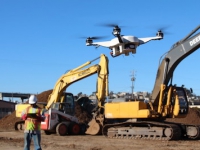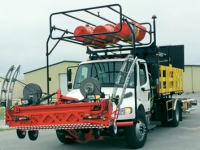How many times have you heard or used the phrases, “We are too high” or “We can’t get low,” as an excuse for losing a bid or a presentation? I have heard it (and used it a time or two) over my career and it has been a long career. I recently heard it again in a focus group that I was leading and got flashbacks that I thought I might share with you.First, I would make the case that you do not want to be the low bidder on any project in the design-bid-build process. My favorite saying from one of my clients is that, “The low bidder is most likely the one who screwed up and overlooked something in their bid process that will cost them and their clients dearly when construction gets underway.” Then there is one from a mentor of mine who said, ”The high bid is either a 'courtesy bid' or someone who thinks we are idiots.” This was usually followed by, “Throw out the high and the low bids and then do a spread sheet for me to evaluate.”Five decades later, the same conversation is still held daily across the AEC industry whether the project is residential, institutional, commercial or industrial and whether you are owner, architect, general contractor, sub or tenant.
Komatsu is combining their autonomous vehicles with drones to become more productive and accurate in their site work.
October 21, 2015
Emily Pfeiffer of Construction Dive recently reported on 10 trends that are impacting construction today.
September 30, 2015
The construction industry has fought the issue of independent contractors with no benefits or employees with full benefits for the last decade. Now the startup Uber is in the middle of two suits, and the ultimate outcomes on those decisions will impact their viability in the future.And it is not just Uber. The decisions on these cases in California could have an impact on the viability and growth of “on demand” startups and the personal service businesses like Uber. The startups and their business models are a perceived threat to the “old way of life” where you got a job and benefits and you stayed with that company or industry model until you retired.
September 21, 2015
In a 3-2 decision, the National Labor Relations Board NLRB has made a decision that redefines “joint employer status” and will likely change the way many businesses deal with their workers, whether employees or contract labor.The decision, applauded by the unions, is seen by some as a move to further the Obama-union relationship and to pave the way for union expansion during the last 18 months of the Obama administration.According to an article in The Hill citing the majority opinion, “In the decision, the Board applies long-established principles to find that two or more entities are joint employers of a single workforce if (1) they are both employers within the meaning of the common law; and (2) they share or codetermine those matters governing the essential terms and conditions of employment.
September 14, 2015
We have previously posted on the Apple Campus 2 and its unique design.In the last two months, “after a series of delays and cost increases,” Apple, Inc. has replaced its original general contractors DPR/Skanska with a new joint venture of Rudolph & Sletten, based in Redwood City, and Atlanta based Holder Construction. The new joint venture is tasked with completing the project.DeZeen magazine published an update article on the build of the new Apple Campus in Cupertino that Steve Jobs told the City Council would house 12,000 Apple employees when it is completed after 32 months of construction.
September 09, 2015
A drone hovers over a major construction site shooting video progress photos, a daily or weekly occurrence. One of the concrete finishing crew becomes aware of the buzzing of the quadcopter hovering over them and asks the foreman, “Is that drone watching me work?” The foreman had been told at the job briefing that morning that the build was three days behind schedule and everyone on the concrete crew was going to have to up their game to get back on schedule. The foreman answers the worker, “Naw, the drone is just monitoring progress and not specific workers on the site.” Although he thought that they might be since he knew that the software makes it possible to monitor crew members even though drones had only been used for the last year on their builds. Science fiction? Not at all.The FAA has issued over 1,000 special permits for the use of drones in the US. Many of those permits have been issued to construction companies who are working to catch up on ways that they can be used to improve productivity on their builds.
September 04, 2015
As part of our continuing stories on the use of robotics in the construction industry, today we spotlight the SAM100, the first commercially available robotic mason in use today.The Sam100 is in use by the Clark Construction Group, LLC on the construction of the 29,000 square foot Lab School in Washington, DC. The robotic mason works with a human mason and together they can place 4-6 times as many bricks as their human counterparts. That is a real improvement in productivity. The robot was built and tested by Construction Robotics, a New York based firm which has shown its worth on several projects. The Lab School is the first application in the DC area.This type of laser-guided robot is interesting since it “butters” and places the bricks.
September 01, 2015
In the US, truck manufacturers are delivering autonomous trucks to the military, but now the Florida Department of Transportation is about to launch its first venture into the public arena by using autonomous trucks in rolling construction zones on Florida highways. These construction zones for overlaying, repairs and striping are among the most dangerous conditions on our highways.
August 28, 2015
We have written about the strength and skills of master craftspeople in the construction industry, but one company is going further to honor construction workers on their own.According to a recent post on ConstructionEquipmentGuide.com, the "Ozinga Brothers, a fourth-generation family-owned ready mix concrete producer and supplier business founded in 1928 on the south side of Chicago, currently run by five brothers and a cousin,” have teamed up with their ad agency to produce a campaign called “Born to Build” that honors construction workers.The campaign, underwritten by the Ozingas, includes 16 billboards, a series of 60-second ads, and an on-going social media strategy that has paid dividends for the company in their efforts to honor the industry.
August 25, 2015






















